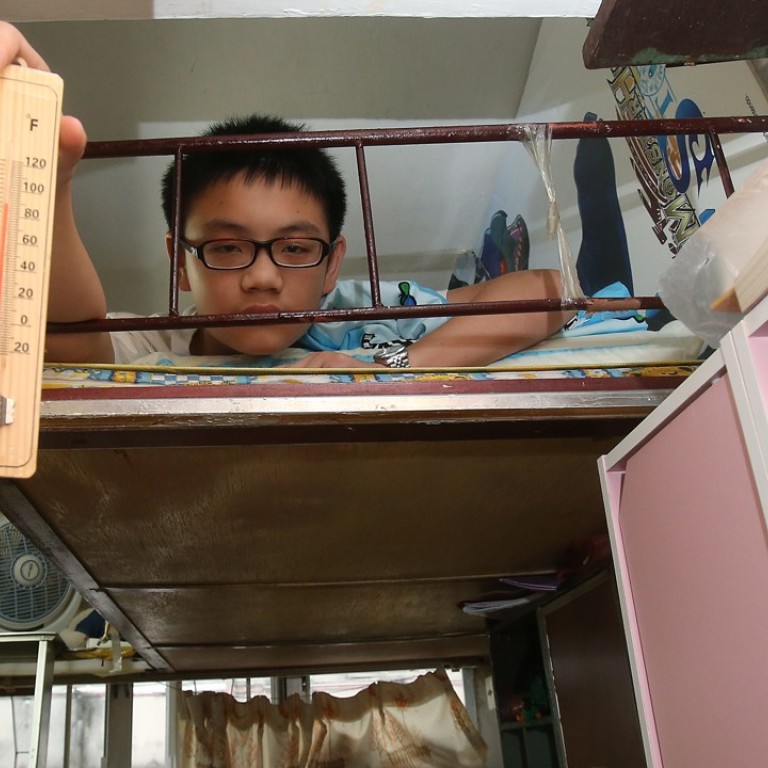
No more coffin homes: how Hong Kong families waiting for public housing can benefit from cheap, NGO-run subdivided units
Ho Hei-wah says having NGOs operate approved subdivided units will mean better-managed and inexpensive housing for Hong Kong’s underprivileged, and the government’s proposal is a welcome one
Being allocated to public rental housing is the ultimate solution, but this takes time. Around70,400units of new public rental housing will become available in the next five years. But given the waiting list of nearly 280,000 households, or around half a million people, an annual provision of 14,000 new flats is far from sufficient.
Rooftop slums are a stark reminder of Hong Kong’s social and housing problems
Imagine a child who sweats through the summer, suffocating in a 60 sq ft room with a monthly rent as high as HK$3,600. He has to study, play and rest on his bed, infested with bedbugs and insects.
This absurdity originates from the dysfunction of the rental market. Some landlords grab the opportunity by taking a large flat and dividing it into several small cocklofts, or coffin-like bedspaces, and renting them out for three to five times the original rental rate (in per sq ft terms).
Why is Hong Kong housing so expensive?
Some property owners prefer to earn rent without spending time on management. This paves the way for property management agencies that make huge profits by dividing and renting the units.
Providing inexpensive and better-managed subdivided flats is an interim way out. Social enterprises run by NGOs can act as agencies by identifying potential landlords and suitable flats. Individual or corporate landlords can be encouraged to sign tenures at below the distorted market rates, while still making a profit. And modifications can be made to make the spaces a little more comfortable for tenants.
Hong Kong’s subdivided flats are leaving some residents in fire traps
Critics say such schemes legitimise and encourage the subdivision of flats, rationalising an unjust situation. But temporary measures are always a compromise. Even a small step may have a big impact on the affected people. Interim measures do not negate long-term policy: they are not mutually exclusive but equally important.
Increasing the supply of public rental housing is the ultimate solution. However, other policies, such as increasing the land supply, rezoning town planning for maximum land utilisation, usage of government, institution or community sites or vacant schools, and resuming rent control or rent subsidy for applicants, should also be advocated.
Ho Hei-wah is director of the Society for Community Organisation

